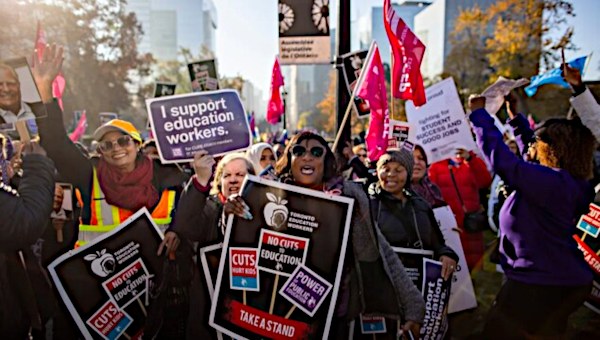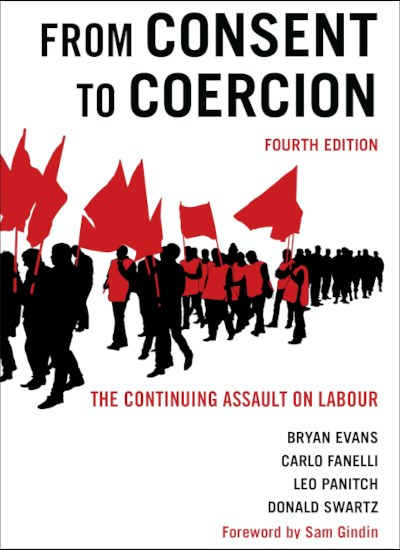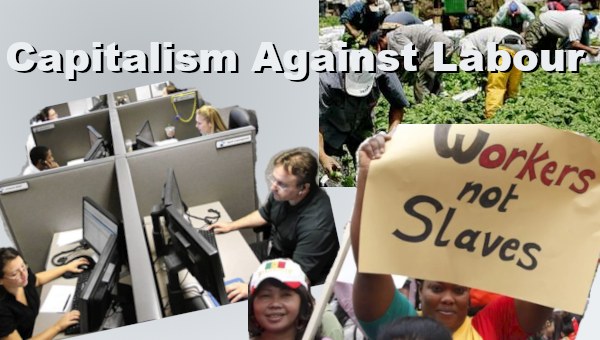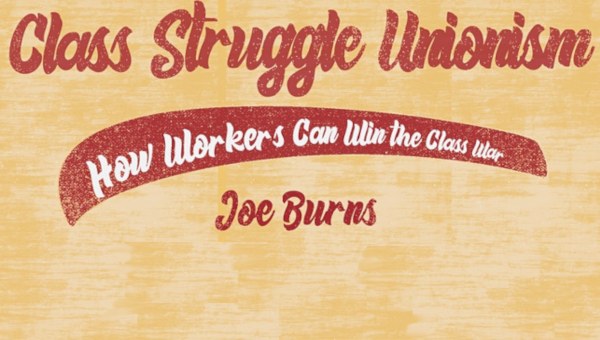Canadian Unions and the State: Losing Ground, Moving On
There have now been four editions of From Consent to Coercion: The Continuing Assault on Labour (Toronto: University of Toronto Press, 2023), the first dating back to 1985, and it still must be considered a work in progress that seeks to inform and influence workers’ struggles in Canada. Tragically, Leo Panitch didn’t live to see the publication of this latest edition, where original co-author Donald Swartz is joined by Bryan Evans and Carlo Fanelli, or be a part of the effort to put its conclusions to the test.
The book considers the failure of trade unions to successfully resist the measures of state coercion they have faced during the neoliberal decades. It addresses major weaknesses within unions and explores the basis for effective methods of struggle. This involves a serious study of a decades’ long assault on organized workers and its political conclusions are drawn from an extraordinary narrative of state coercion.

Struggle and Containment
The first chapter begins with a landmark development. “An era of free collective bargaining began with the federal government’s 1944 Order-in-Council PC 1003” (p. 1). This allowed private sector workers to bargain collectively and strike and established sanctions on employers who refused to deal with unions. The authors suggest that this measure and the Industrial Relations and Disputes Investigation Act of 1948 that followed marked “the point at which Canada extended democracy to include free collective bargaining” (p. 1).
Some may have assumed that “steady if slow progress toward the ever fuller realization of workers’ rights” (p. 2) was assured. However, such confidence was misplaced and thus the theme of From Consent to Coercion: “This book is about the coercive assault against trade union rights and freedoms in Canada by both federal and provincial governments of every political stripe” (p. 2).
The Canadian state constitutionally enshrined “liberal democratic freedoms” in the early 1980s, even as it moved aggressively against the rights of workers” (p. 2/3). The most important of these measures was the 1982 Public Sector Compensation Restraint Act that limited wage increases and “completely suppressed the right to bargain and strike for all those public employees covered by the legislation.” Provincial governments followed this lead, imposing their own restrictions (p. 3). Such ‘emergency’ measures became part of a pattern that now spans decades that is accurately characterized as “permanent exceptionalism” (p. 4).
The second chapter, traces the roots of labour relations’ in Canada and considers a post-war period that brought major improvements. Even after the Trade Unions Act of 1872, “loosened some of the legal restrictions on unions … the state’s extensive use of force in defence of the unfettered rights of capital” still held sway and “workers found themselves confronted with a more or less united opposition of both employer and state” (pp. 26-27).
More wily representatives of the capitalist class anticipated the need for strategies of containment. The federal Department of Labour was established in 1900 and the Industrial Disputes Investigation Act (IDIA) followed in 1907. Future prime minister, Mackenzie King, wrote of “the danger of this whole body being converted to socialism if employers fail to take them into a sort of partnership through agreements with recognized unions” (p. 28).
The need to reach such an accommodation became acute in the face of “an unprecedented tide of sustained and comprehensive working-class mobilization and politicization through the 1940s” (p. 29). In this context, the 1945 Windsor Ford Strike produced the famous Rand Formula, granting the compulsory dues checkoff to unions. The previously mentioned labour relations legislation followed, and the rights of organized workers advanced very significantly.
These measures were, in Rand’s somewhat coded language, “devised to adjust, toward an increasing harmony, the interests of capital, labour and the public” (p. 32). In return for enhanced union rights, however, an “extensive set of restrictions (was) placed on collective action by unions, which established in Canada one of the most restrictive and highly juridified frameworks for collective bargaining in any capitalist democracy.” This included “the ban on strikes during the term of a collective agreement” (p. 32).
This settlement “was an adjustment devised not to undermine but to secure and maintain under new conditions capital’s ‘long run… dominant position’” (p. 32) and a strong element of self-policing on the part of unions was part of the deal. “What before had taken the appearance of the charge of the Mounties now increasingly took the form of the rule of law by which unions policed themselves in most instances” (p. 33).
The authors stress that “The corrosive effects of juridical and ideological structuring were severe. The trade unionism that subsequently developed in Canada bore all the signs of the web of legal restrictions that enveloped it. Its practice and consciousness were highly legalistic and bureaucratic, and therefore its collective strength was limited” (p. 38). This baggage of the ‘golden age’ was carried into a considerably more challenging period with dire results.
The Turn to Coercion
The book charts the coercive turn by the state in its dealing with trade unions and considers the transitional decade of the 1970s. “The wave of industrial militancy that arose in the mid-1960s continued into the early seventies, reaching its crescendo with newly unionized public-sector workers often taking the lead in protesting the assault against working-class standards of living” (p. 40).
This resistance unfolded in a situation where the economic underpinnings of the class struggle had changed. The post-war boom had come to an end and “The seventies were characterized by ‘stagflation’: growth rates, rising below the level necessary for full employment, combined with severe inflationary tendencies. In such conditions, the margin for concessions to secure labour’s consent no longer existed; indeed, “capital increasingly required concessions” (p. 41).
As the state imposed these concessions, the weapon of choice was back-to-work legislation from both provincial and federal governments. “In the first 15 years after 1950, there were only six instances of back-to-work legislation in total; there were 51 such instances in the following decade and a half, with half of these from 1975 to 1979 alone” (p. 42). “The use of back-to-work legislation primarily concerned public-sector workers although the statutory incomes policy of the federal Anti-Inflation Program of 1975-78 suspended free collective bargaining for all workers” (p. 43). This legislation included unlimited fines and prison terms of up to five years. Then Prime minister Pierre Trudeau boasted “We’ll put a few union leaders in jail for three years and others will get the message” (p. 43).
The readiness of the state to act was seen in its treatment of postal workers. In 1978, the right to bargain was removed from the Canadian Union of Postal Workers (CUPW) and the terms of the previous collective agreement were imposed on them. CUPW president J.C. Parrot was charged for not publicly calling for the law to be obeyed and only granted bail on condition that he tell his members what the law demanded of them (p. 43).
During the 1980s, the Mulroney government “not only carried the assault on federal public employees to unprecedented levels but provided an ‘example’ for the private sector and provincial governments” (p. 58). Still, the decade saw resistance by workers and some victories around ‘pay equity’, “a product of feminist struggles both inside and outside the labour movement” (p. 67). Explosive class battles emerged in BC and the fight against the defining neoliberal strategy of ‘free trade’ was taken up.
“The extension of the neoliberal order, the ascendency of financial capital and the spread of commodification into every aspect of social life led to even great pressures on organized labour through the 1990s” (p. 80). In this decade, the assault on social provision intensified and the reordering of the workforce, to render it more vulnerable to increased exploitation, was taken forward (p. 81).
At the federal level, Liberal governments took massive steps in implementing austerity and, in Ontario, an NDP government embraced the attack on trade union rights. This harsh experience was followed by a Tory government that provoked powerful working class resistance but that posed sharply the problems in union structures, perspectives and strategies that this book considers.
The chapter concludes on an interesting, too often ignored, note. “The experiences of social democracy across the provinces through the 1990s shattered the labour movement’s principal strategy of electing NDP governments… The NDP did not just fall short in terms of the degree of reform needed and expected by the unions, but it had actively undermined union power” (pp. 99-100).
Ongoing Attacks
As the new century opened “governments of all partisan stripes finally shed any remaining vestiges of consent, extending the era of austerity and coercion” (p. 103). In this regard, a refashioned Conservative Party, with Stephen Harper at the helm, was ready to give a regressive lead. It embraced permanent austerity and further undermined trade union rights (p. 108).
The coercive wave continued at the provincial level, with attacks on public-sector workers providing a lead for employers in the private-sector. Again and again, we see outbreaks of defiance but the failure of unions to break out of patterns of class compromise continued. Hopes that the financial crisis of 2008 would usher in a more conciliatory approach were dashed. Short-term stimulatory spending gave way to redoubled austerity as soon as global capitalism had stabilized (p. 130).

Justin Trudeau’s ‘progressive’ credentials notwithstanding, there has been no serious effort on the part of his governments to curtail the neoliberal onslaught and he has been ready to “use coercion when consent failed to achieve its desired outcomes” (p. 134). This was clearly evident when postal workers were forced back to work in 2018 (p. 133).
The impact of the pandemic produced even greater levels of dislocation than the Great Recession. Once again, hastily improvised stimulatory measures were only pursued to the degree necessary to “ensure that neoliberal capitalism remains intact” (p. 138). The war on unions continued almost without let up at both the federal and provincial level.
From Consent to Coercion turns its attention to a consistent approach that unions have taken in response to state attacks. “For 40 years, Canadian trade unions have come to rely on legalistic strategies – reverting to the law and courts – to sustain and advance their rights and freedoms” (p. 168). This has hinged on the 1982 Charter of Rights and Freedoms which “was removed from the actually existing conditions of class relations and struggle in the early 1980s, a mark of the abstract, and to some extent cosmetic, nature of such an a priori guarantee of freedom of association” (p. 169).
The authors trace the efforts to translate these abstract assurances into concrete protections for workers. They conclude that “In nearly all of these cases, they have done little to extend rights to non-unionized workers, let alone contribute to a reinvigorated and confident labour movement” (p. 192). Hanging over the whole process has been the ‘nuclear option’ of the notwithstanding clause enabling governments to escape constitutional obligations outright (p. 193).
New Strategy
The final chapter grapples with a situation where “the labour movement has been largely incapable of mounting any meaningful or sustained counter-offensive, appearing largely confused both ideologically and strategically” (p. 198). Unions have also lost their political compass to a serious degree. “Social democracy transformed as it adapted to the requirements of neoliberal capital” (p. 208). The supposed political arm of the labour movement joined the attack on workers.
In arguing for a change of course, the authors invoke Marx’s proposition that unions “must now learn to act deliberately as organizing centres of the working class in the broad interest of its complete emancipation. They must aid every social and political movement tending in that direction.” To take this forward, the book makes clear that there must be a “linking (of) trade union activism with socialism as part of a radical politics of universalism” (p. 212). Internationalism is also vital to the project but it can’t be a token gesture. “Strategic international coordination is dependent on the strength of national movements” (p. 214).
The authors contend that a new socialist party is needed but also argue for “some sort of organization within which to discuss and develop what a serious socialist strategy would amount to.” They imagine a ‘structured movement’ that wouldn’t stand in opposition to issue-based coalition building but that would be a wide-ranging basis for developing socialist perspectives (p. 219). They suggest that “labour and other social movements must envision how to restructure the state so as to provide for meaningful democratic participation and control” (p. 216).
The changes that the authors advocate require a “fundamental democratization of the way unions function.” The post-war union envelopments, within an extremely legalistic collective bargaining framework, has “[e]xacerbated hierarchical developments within the unions.” The effective functioning of unions and their ability to develop winning approaches in the face of neoliberalism and state coercion demands “membership participation and control over elected and appointed officials” (p. 221).
The concluding paragraph suggests that “The course of neoliberalism has thoroughly eroded what vestiges remain of trade union militancy.” In the face of this impasse, “Revitalizing the political promise of a radical working-class politics remains a crucial step in resisting state and employer coercion and potentially realizing a better world that gets to the root of the problem – capitalism” (p. 225).
Vital Contribution
In his Foreword, Sam Gindin writes “What makes the original book and all its updates such a definitive work is its meticulous research and an analytical framework that merged history, political economy, class conflicts, and the role of the state, all without ignoring the specificity of Canada. Scholarly yet accessible, it is unashamedly partisan in its support for unions without exempting unions from its critical gaze” (p. xivi). This is a solid appraisal of the significance of this book.
Those who seek to re-establish a post-war Keynesian ‘golden age’ will be disappointed. The book is of greater value to those who want the class struggle to be fought on more equal terms. It will fully resonate with those who want that struggle to be taken to levels of social transformation and socialism.
For these very reasons, it is both inevitable and healthy that the book should be not just a source of knowledge and understanding, but also a catalyst for debate. In this regard, two criticisms of the case the authors set out might be laid-out. Bureaucratic union structures and their stifling effects are portrayed throughout the book. However, in seeking remedies, the authors don’t, in my view, take things as far as their study demands.
Those who framed the post-war settlement understood the need for ‘respectable’ union leaders and for the marginalization of militants. Union bureaucracies have developed that are quite comfortable with the mechanisms of compromise. It’s likely that the rejuvenation of the unions will meet with much stiffer resistance than the authors imagine. Moreover, the process is likely to require a sharper rank and file challenge than they contemplate.
Secondly, as we debate socialist strategy, there is no doubt that some very major disagreements on the nature of the capitalist state will have to be part of the process. I’m one of those on the socialist left who doesn’t share the belief that the state can be captured, democratized or transformed in the way the authors anticipate. Without exploring the ramifications of this disagreement, I’ll just say that, though the book advances a concept of ‘in and against the state,’ it musters an impressive body of evidence supporting the view that the capitalist state is an irredeemable instrument of class rule that, like Margaret Thatcher, ‘is not for turning.’
Such criticisms in no way undermine my conviction that this book makes a vital contribution and the necessity of debating these strategic issues out as we collectively struggle. From Consent to Coercion outlines the neoliberal strategy we have lost so much ground to and offers invaluable insights into the reasons for the relative passivity of unions in the face of it. It also raises the questions we must consider if we are to develop effective strategies. This book should be studied by all who want to build fighting trade unions. •





